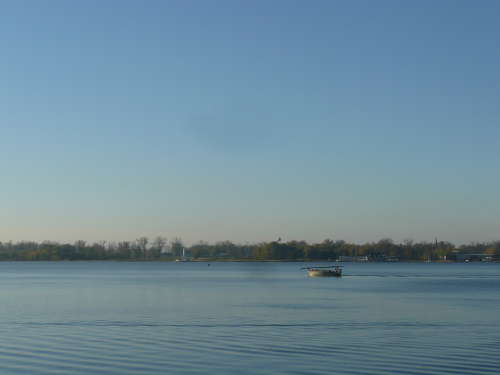 Location Taken: Mississippi River, near St. Louis
Location Taken: Mississippi River, near St. Louis
Time Taken: November 2012
I’m reading yet another book on earthquakes and volcanoes, and hit the section on the New Madrid Earthquakes, a series of extremely strong quakes in 1811-1812 along the Mississippi River, near the Missouri/Kentucky/Tennessee border. I’ve read about these quakes dozens of times, but this time I recalled an interesting bit of trivia I learned when I visited Mammoth Caves in Kentucky years ago.
Mammoth Caves was a great source of saltpeter, one of the necessary components of gunpowder. And saltpeter production was ramping up in preparation for the War of 1812. And yet, despite the ever increasing value of saltpeter, the various people who had been gathering it from the caves all decided to sell their rights to it to a single owner, Charles Wilkins.
Wilkins ramped up the saltpeter business to industrial scales, providing a very large percentage of that good for the Americans fighting in the war that raged for the next three years. Once the saltpeter business stopped being lucrative, the caves passed hands a few times, and eventually became a National Park. If all those small land owners hadn’t sold their shares off, who knows if that would have ever happened. It certainly would have been far more difficult for the National Park people to negotiate ownership of a hundred people versus just one.
So why did all those people sell at that opportune moment, right before the caves became an economic bonanza?
The New Madrid Earthquakes, of course.
Less than six months before that sale, a series of gigantic quakes shook the area, destroying towns all along the Mississippi, and scaring people for hundreds of miles around. Including those living in Mammoth Caves territory.
It was a good thing all four of the major earthquakes (ranging between magnitudes 7.0 and 8.6) hit in the early morning hours, or else those saltpeter gatherers might just have been down in the caves when the ground started moving. As terrifying as the quakes were on the surface, it would have been even worse if you were underground at the time, the ground shaking back and forth by as much as a foot each jolt, your lantern extinguished due to falling over, and the rock ceiling above you groaning in a most unsettling way.
And while thankfully that wasn’t the case, the destroyed towns and toppled chimneys were definitely enough to make a whole lot of people think this area might just be a rather poor place to settle down in. That offer to buy their land must have seemed god-sent.
There hasn’t been another earthquake at that scale in that area since then. A 6.6 one hit in 1895, and a 5.4 in 1968. Both damaged buildings, but didn’t get to the town-destroying level. Smaller earthquakes happen there all the time, though only about one per year is strong enough to be noticeable. The biggest earthquakes tend to hit that area about every 300 years. It’s been 200 already. However, this is a very unusual fault zone, and is nowhere near fully understood by scientists, so who knows what the future will bring.
